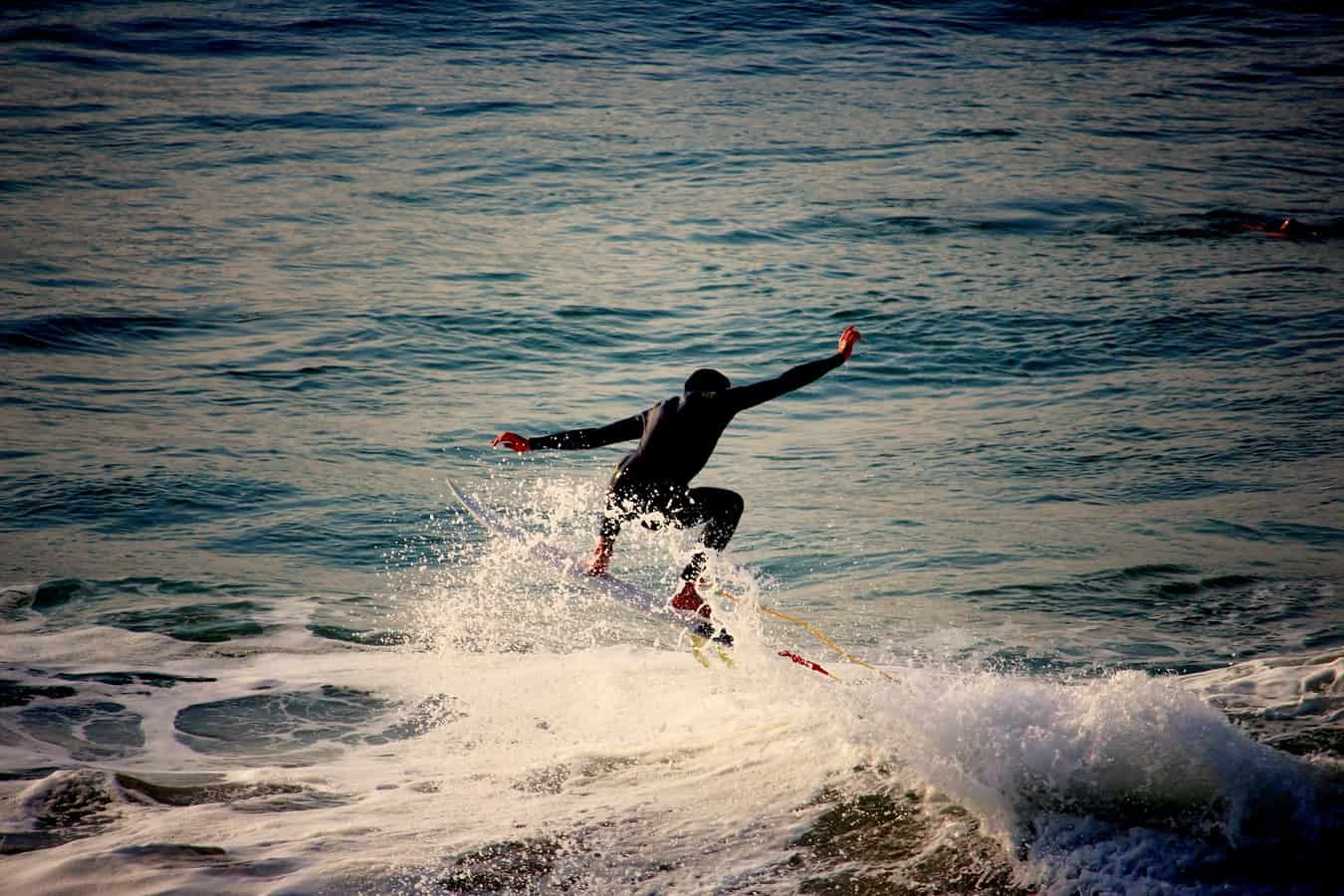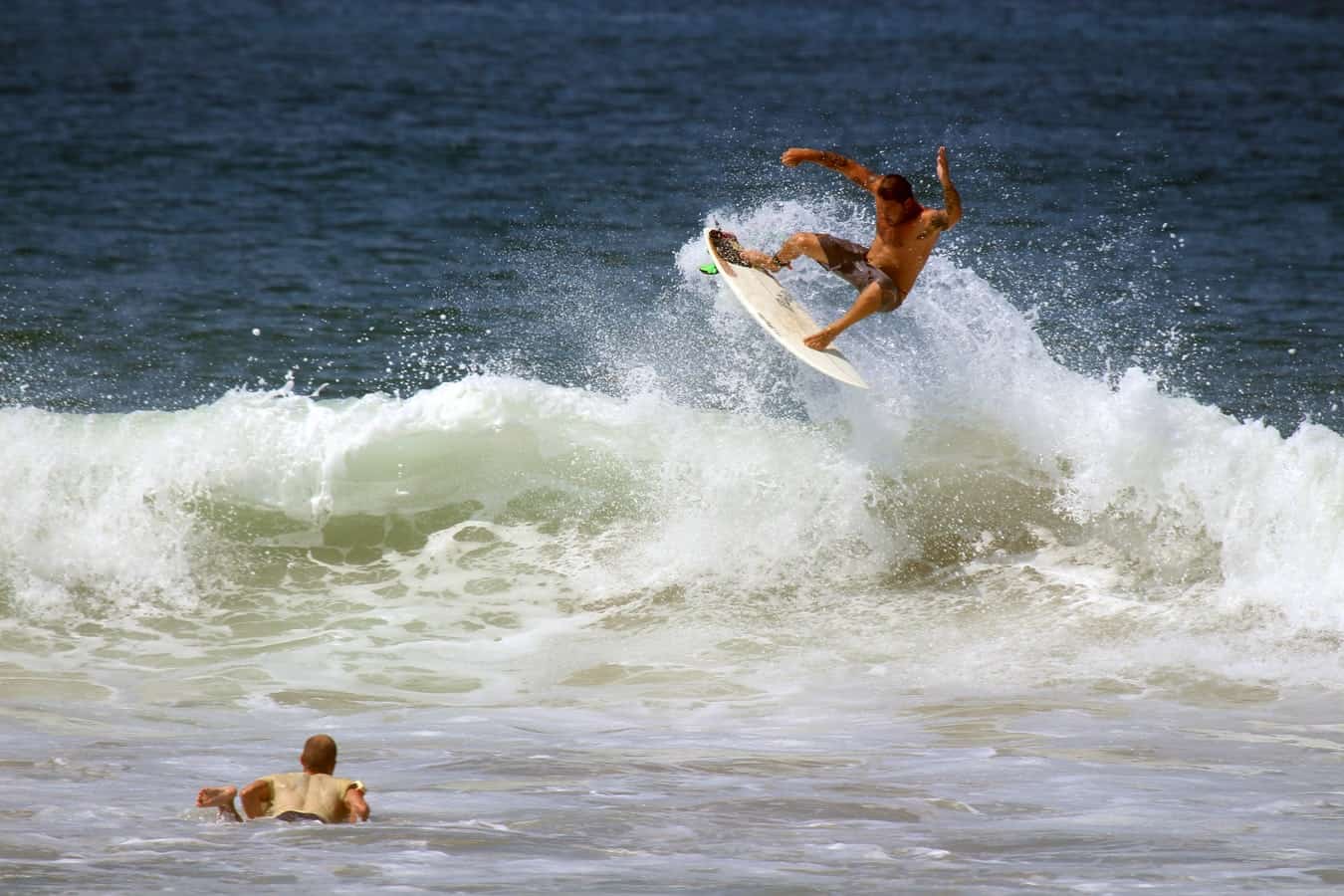An ACL injury is not as common in surfing as it is in other sports. When it happens though, surfers most likely have to undergo surgery.
How Can an ACL Surgery or Injury Affect Your Surfing?
An ACL injury can keep a surfer from surfing for several months. The rehabilitation time following treatment is generally 6-9 months. Most surfers return to the sport after adequate strength training and rehabilitation. The knee must be fully stable and able to perform at the previous level it did, to avoid further injury.
With surfing being the remarkable sport that it is, it is no wonder that its players want to get back out on the turf and surf it up after an injury. An ACL injury is a tough injury with an even tougher rehabilitation. So, how can a surfer expect to fair after an ACL injury?
Surfers And ACL Injuries
It is quite possible to return to surfing after an ACL injury, although it will take a large effort on the part of the surfer. The physical trauma of the injury will need to be treated, and a lengthy rehabilitation will need to take place to return to previous activities.
An ACL injury is a common injury amongst sports players, but not as common among surfers. Many sports players dread an ACL injury because of the long rehabilitation period. A tearing of the cartilage in the knee can have a surfer back to surfing in only twelve weeks following surgery. Rehabilitation of an ACL surgery however, takes at least nine to twelve months.
Studies show that approximately 60% of professional athletes return to their pre-injury performance skills. The recovery process is both a physical and psychological for most players. There is the physical rehabilitation that is a hard, long process, but also a psychological rehabilitation that for some, is the hardest part of recovering.
The psychological aspect of the recovery is just as important as the physical. To get to a performing state again, will most often require pushing oneself to go the distance. There are times it may seem like giving up is all that can be done, this is when it is the most important to keep working on the recovery.
Physical therapy will follow an ACL surgery or treatment and is a very important process to be involved in. It is crucial to work with the knees slowly and properly. This also gives the person a type of support system and aids in continuing through the rehabilitation.
There are countless exercises and knee strengthening courses available in physical therapy. The recovery process can go smoothly and quicker than had recovery been done only at home.
Surfers have seen significant improvement within three to four months of beginning physical therapy with some surfers returning to the water then. Always check with your doctor before surfing following an injury and remember that the knee will not be fully healed nor will it be able to accept much force too early on in recovery.

What Is An ACL Injury?
An ACL injury is a sprain or tear of the anterior cruciate ligament (ACL). The ACL is one of the major ligaments in the knee. In ligament damage, there is typically either a complete or partial tear of the tissue. It is important to seek immediate care to determine the severity of the injury, allowing for proper treatment.
The symptoms of an ACL injury typically include a loud “popping” feeling in the knee followed by severe pain and inability to continue the activity that was being performed. The injured site will swell rapidly while having a feeling of “giving out” with weight applied.
ACL injuries often occur during sports activities that tend to put stress on the knee including:
- Cutting, or sudden slowing down and a change of direction
- Pivoting while feet are still planted
- Suddenly stopping
- A direct impact to the knee
Having an ACL injury puts people at higher risk of developing osteoarthritis in the knee. A reconstructed ligament from surgery does not rule out this risk. Many factors may influence the risk of arthritis, including related injuries in the knee joint, the severity of the original injury, and level of activity after treatment.
Surfing After ACL Injury
Many surfers go on to surf as they previously did following their surgery and rehabilitation. There are quite a few stories of pro surfers going through their entire career or part of their career with an injured ACL. This is not recommended of course, but an ACL injury is not necessarily the end of a surfer’s time in the water.
Limiting Chances Of A Knee Injury
Knee injuries can not always be avoided, but certain precautions can be taken to lessen the chance of injuries occurring. The following are excellent strategies to help prevent injury or to aid in recovery.
Stretching
Stretching is a tried and true method of prevention and does well to aid in recovery. Stretching loosens the muscles around the knee reducing pressure on the joint. When performing knee stretches, perform stretches that target the tendons and muscles surrounding the knee. Knee stretches should target the hamstrings, calves, quadriceps, hip flexors and adductors, and iliotibial band.
Exercises
Exercising your knee area can do wonders for preventative care as well as benefiting a recovery after treatment. The following exercises can improve your strength and build, or regain maximal knee range of motion. If at any time, any exercise causes pain, stop the exercise immediately and speak to your doctor.
With such a wide range of beneficial exercises that can be done, bicycling is a great addition. Bicycling can improve knee range of motion, muscular endurance in legs, and is a non-weight-bearing exercise. Generally it is recommended to ride 20-30 minutes several times a week.
One exercise, which focuses on jumping and landing, is plyometrics. Plyometrics helps to restore neuromuscular recruitment of the muscles around the hips and knees. Exercises may include single leg hopping, jump lunges, and lateral plyometric hops.
The Heel Slide
This exercise is great for improving knee flexion range of motion. Flexion is the ability of the knee to fully bend. A mat may be useful to some of these exercises, as some require lying on the back.
- Lie on your back and slowly slide one heel upwards toward your glutes. Allow your knee to bend as far as it can comfortably
- Slowly slide your heel back to the straight-leg position
- Repeat this exercise 10 times for each leg, remembering to move slowly as you bend and straighten
The Prone Hang Exercise
- Lie flat on your stomach on a bed or table with your leg over the edge of the bed or table
- Pull your knee into full extension, allowing it to naturally pull
- Hold this position for 15-30 seconds
- Bend your knee up
- Repeat three times for each leg
Quad Sets
The quadriceps muscle supports the joint and kneecap and straightens the knee. It is a good idea to improve your quadricep function so that the knee is adequately supported.
- Lie on your back and lay your legs and knee out straight
- Place a small item like a rolled up towel under your knee
- While tightening your quad muscle, press the back of your knee into the towel
- Hold the position for 5 seconds
- Slowly release
- Repeat with each knee 10 times
The Short Arc Quad Exercise
- Place a ball or rolled up towel under your knee.
- While tightening your quad, straighten your knee out all the way
- Hold your knee straight for 3 seconds
- Very slowly lower your knee back down
- Repeat with each leg 10 times
Modified Mini Squats
- Stand with your legs shoulder-length apart
- Bend your knees to a 45 degree angle
- Hold this position for 3 seconds
- Slowly straighten back up into standing position
- Repeat 10 times
Straight Leg Raises
Research shows that hip strength can directly impact knee position, and weaker hips can cause misalignment in the knees. Straight leg improve hip strength which in turn, helps the knees.
- Lie on your back with one knee bent
- While tightening your quad muscle on your straight leg, raise the leg up about a foot to a foot and a half high. Be sure to keep your knee straight the entire time.
- Hold this position for 5 seconds
- Slowly lower the leg back down
- Repeat this exercise with each leg 15 times
Always consult your doctor before performing any exercises or starting a new stretching routine. If any exercises or stretching causes you any pain, do not continue and be sure to consult your doctor.

